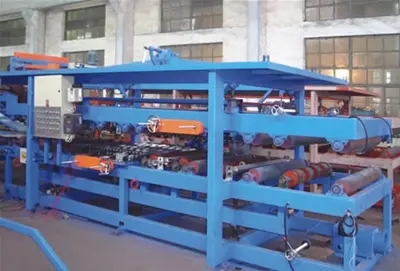
The Metal Storage Rack Upright Pillar Roll Forming Machine
In the ever-evolving world of warehousing and industrial storage solutions, the demand for effective and durable storage systems is consistently on the rise. One of the most prominent technologies in this arena is the metal storage rack, specifically those produced using an upright pillar roll forming machine. This innovative machinery has transformed the way storage racks are manufactured, ensuring that they are not only efficient but also cost-effective.
What is an Upright Pillar Roll Forming Machine?
An upright pillar roll forming machine is a specialized piece of equipment used in the production of metal components for storage racks. The machine continuously feeds metal strips into a series of rollers that shape the material into the desired profile. This process is known as roll forming, which is recognized for its ability to produce complex shapes with precision and minimal waste. The upright pillar, which serves as the backbone of a metal storage rack, is a critical component that requires strength and stability, making the roll forming process ideal for such applications.
The Benefits of Using an Upright Pillar Roll Forming Machine
1. Precision Manufacturing Roll forming allows for high precision in creating uniform profiles. This uniformity is essential for ensuring that all parts of a storage rack fit together seamlessly, enhancing the overall structural integrity of the rack.
2. Material Efficiency The roll forming process produces less scrap material compared to other manufacturing methods. This efficiency not only helps in reducing costs but also makes it more environmentally friendly by minimizing waste.
3. Customizability One of the significant advantages of using roll forming technology is the ability to customize designs. Manufacturers can adjust the roller configurations to create upright pillars with varying dimensions, thicknesses, and shapes, tailored to the specific needs of different storage systems.
4. High Strength and Durability Metal storage racks produced using roll forming machines are known for their strength and durability. The upright pillars can withstand significant weight loads, providing stability and safety in storage environments.

5. Speed and Efficiency Roll forming machines operate at high speeds, allowing for the rapid production of storage rack components. This capability ensures that manufacturers can meet market demand without compromising on quality.
Applications of Metal Storage Racks
Metal storage racks are widely used across various industries, including retail, manufacturing, logistics, and distribution. These racks facilitate efficient storage and organization of goods, helping businesses optimize their space and improve operational efficiency.
1. Warehouse Storage Metal storage racks are essential in warehouses, where they allow for vertical storage of goods, maximizing floor space. Upright pillars provide the necessary support for heavy loads, ensuring safety and stability.
2. Retail Display In the retail sector, metal storage racks are used for displaying products in an organized manner. The upright pillars allow for adjustable shelving, accommodating various product sizes and maximizing merchandise visibility.
3. Industrial Applications In manufacturing facilities, metal racks are crucial for organizing tools and materials. The robust construction of the upright pillars ensures that heavy equipment can be stored securely without risk of collapse.
Conclusion
The introduction of the upright pillar roll forming machine has revolutionized metal storage rack production. Its ability to produce high-quality, durable, and customizable upright pillars has transformed storage solutions across various industries. As businesses continue to seek efficient storage options, the role of roll forming technology will only become more significant. With its advantages in precision, material efficiency, and speed, the metal storage rack, supported by robust upright pillars, stands as a testament to innovation in industrial storage solutions. The future of warehousing and storage looks bright, driven by advancements in manufacturing technologies like roll forming.